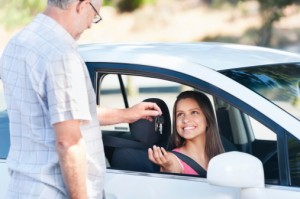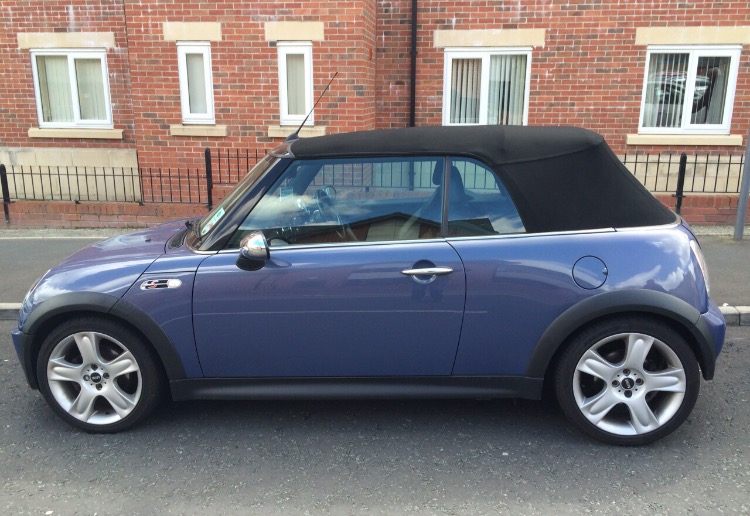 Whether you want to buy a car for yourself or have decided to give yourself the green light in taking a shot at driving, you will need a full driving licence before you can operate cars on the roads.
Whether you want to buy a car for yourself or have decided to give yourself the green light in taking a shot at driving, you will need a full driving licence before you can operate cars on the roads.
Getting a full driving licence in the Isle of Man isn’t as tough as some people may have perceived it to be, although you will have to pass the driving tests to be administered by the UK Driving Standards Agency (DSA), an executive agency under the umbrella of the Department for Transport.
The Isle of man Driving Test Centre, where all driving tests in Manx are administered, is located at Ballafletcher Road, Braddan, Douglas IM4 4QJ.
Before being granted a full licence, there are two types of tests to be passed: the driving theory test and the practical driving test, although one has to pass the driving theory test first to be eligible to take the practical driving test. These two tests are discussed further below.
The Driving Theory Test
There are about 1.6 million people around the UK that take the driving theory test annually, and based on the latest figures, the pass rate is around 65%. The Driving Theory test has two components: the computer-based multiple choice test and the hazard perception test, both of which are taken on the same testing session. One has to pass both tests on the same testing session to be granted a Theory Test Pass Certificate, a requirement for the practical driving test.
Multiple choice test questions vary in every category of vehicles the applicant is applying a driving licence for. As such, every set of questions will be different for motorcycles, cars, buses, public utility vehicles and other articulated vehicles. Basic knowledge of the Highway Code and UK traffic signs will be essential to be able to pass the multiple choice test.
The hazard perception test is designed to test the reaction capability of the applicant when subjected to hazardous driving conditions or when faced with a potential road dangers. To simulate these road dangers and hazardous driving conditions, multiple short video clips of different driving situations are shown, and the applicant must show what he or she would do to prevent any accident from taking place.
The Practical Driving Test
The practical driving test, composed of the eyesight check, vehicle safety-related questions check, driving ability check and the independent driving check, is designed to test an applicant’s ability to drive safely and effectively in all traffic and road conditions and determine an applicant’s practical knowledge of the Highway Code by observing the applicant’s driving actions and reactions during this test.
The practical driving test usually starts with an eyesight check by the examiner. The applicant is asked to read two vehicle licence plates at a distance of 20 metres for new-style plates and 20.5 metres for old-style plates. Should an applicant fail this eyesight check, the examiner won’t continue with the rest of the test and will mark the applicant as failed.
After the applicant has passed eyesight check, the examiner will then ask the applicant two vehicle safety-related questions. These questions usually take a “tell me and show me” format. For example, the examiner will ask the applicant to tell how to do a vehicle safety check, and then ask the applicant to demonstrate how he or she would carry out what he or she had just told the examiner.
After the examiner is satisfied with the results of the “tell me and show me” session, the applicant will be subjected to a 40-minute driving ability check. During this session, the applicant will be instructed to drive on a pre-determined route of varying traffic and road conditions. The examiner will give a series of directions that the applicant should follow. The driving ability check usually involves a demonstration by the applicant of his or her driving ability during normal stops, angle starts, hill starts, emergency stops, reversing the car safely, reverse parking, parallel parking and turning at different angles.
The last part of the practical driving test is the 10-minute independent driving check. During this session, the applicant will be tested on his or her navigational and orientation skills. The examiner will instruct the applicant to go from point A to point B by just simply following the road directional signs and traffic signs, without any direct intervention from the examiner.
Passed or failed the test?
After the practical driving test, the examiner will tell the applicant how he or she fared in the test as well as tell the applicant whether he or she passed or failed the test. A passing mark will make the applicant be eligible to apply for a full driving licence. A failing mark, on the other hand, would mean that the applicant would have to wait for at least 10 working days before being allowed to take the practical driving test again.



